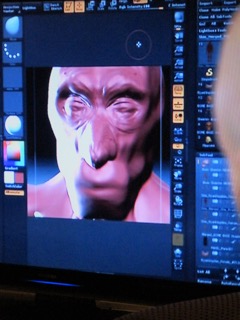Bibliography
American Anthropological Association
2010 Ethnographic Terminalia. New Orleans
Bednarik, Robert
2005. ‘Middle Pleistocene Beads and Symbolism’, Anthropos 100(2):537-552.
2012. ‘Tangled Roots: Mingling among Stone Age peoples muddies humans’ evolutionary story’, Science News 182(4): 22-26.
2012. ‘Kissing, and missing, human cousins: DNA paints a contested picture of Stone Age interbreeding’, Science News 182(13):26-27.
2012. ‘Denisovan DNA reveals history of enigmatic group’, www.sciencenews.org September 20.
2013. ‘New Discoveries reshape debate over human ancestry: Relationships among early hominids disputed’, Science News 184(13):22.
2014. ‘Oldest known human DNA analyzed’, Science News 186(11):8-9.
Blaszczak-Boxe, Agata‘
2014. Woolly Mammoth Yields Well-preserved Brain’ www.livescience November 7, 2014.
Chase, Philip and April Nowell
1998. ‘Taphonomy of a Suggested Middle Paleolithic Bone Flute from Slovenia’, Current Anthropology 39(4):549-553.
Choi, Charles
2016 ‘DNA from Mysterious ‘Denisovans’ Helped Modern Humans to Survive’, Live Science March 17.
Collard, Mark et al.
2016. ‘Faunal evidence for a difference in clothing us between Neanderthals and early modern humans in Europe’, Journal of Anthropological Archaeology (in press).
Cook, Jill
2013. Ice Age Art: arrival of the modern mind. London: British Museum Publications.
Coote, J. and A. Shelton, eds.
1992. Anthropology, Art and Aesthetics. Oxford: Clarendon Press.
D’Errico, Francesco et al.
2003. Archaeological Evidence for the Emergence of Language, Symbolism and Music – An Alternate Multidisciplinary Perspective’, Journal of World Prehistory 17(1):1-70.
De Smedt, Johan and Helen De Cruz
2011. ‘A Cognitive Approach to the Earliest Art’, The Journal of Aesthetics and Art Criticism 69(4):379-389.
Dion, Mark
1999. Archaeology. London: Black Dog Publishing.
Field Museum, Chicago and Royal British Columbia Museum
2016. Mammoths: Giants of the Ice Age exhibition.
Finlayson C, Brown K, Blasco R, et al.
2012 ‘Birds of a Feather: Neanderthal Exploitation of Raptors and Corvids’, PLoS ONE 7(9): e45927. https://doi.org/10.1371/journal.pone.0045927
Fletcher, Amy
2010. ‘Genuine Fakes: Cloning extinct species as science and spectacle’, Politics and the Life Sciences 29(1): 48-60.
Francis, Richard C.
2015. Domesticated: Evolution in a Man-Made World. New York: W.W.Norton & Co.
Gifford-Gonzalez, D.
1993. ‘You can hide, but you can’t run: representations of women’s work in illustrations of Paleolithic life’, Visual Anthropology Review 9(1):23-42.
Henry, Donald O., Harold Hietala et al.
2004. ‘Human Behavioral Organization in the Middle Paleolithic: Were Neanderthals Different?’, American Anthropologist 106(1):17-31.
Kolbert, Elizabeth
2011. “Sleeping With The Enemy”, The New Yorker August 15 & 22:64-75.
Kort, Pamela and Max Hollein, eds.
2009. Darwin, Art and the Search for Origins. Cologne: Wienand Verlag.
Liesowska, Anna
2015. ‘Stone bracelet is oldest ever found in the world’ www.siberiantimes.com May 7, 2015.
Mann, Alan
2003. ‘Imagining Prehistory: Pictorial Reconstructions of the Way We Were’, American Anthropologist 105(1):139-143.
Miller, Daniel
1998. ed. Material Cultures: Why Things Matter. Chicago: Chicago University Press
2006. ed. Materiality. Durham: Duke University Press.
Mithen, Steven
2005. The Singing Neanderthals. London: Weidenfeld & Nicolson.
Moro-Abadia, Oscar and Manuel R. Gonzalez-Morales
2008. ‘Paleolithic Art Studies as the Beginning of the Twenty-First Century: A Loss of Innocence’, Journal of Anthropological Research 64(4):529-552.
Moser, Stephanie
1998. Ancestral images: the iconography of human origins. Ithaca: Cornell University Press.
Nowell, April
2010.‘Defining Behavioral Modernity in the Context of Neanderthal and Anatomically Modern Human Populations’, Annual Review of Anthropology 39:437-452.
Paabo, Svante
2014. Neanderthal Man: in Search of Lost Genomes. New York: Basic Books.
Papagianni, Dimitra and Michael Morse
2013. The Neanderthals Rediscovered: How Modern Science is rewriting their story. London: Thames and Hudson.
Rodriguez-Vidal, Joaquin et al.
2014. ‘A rock engraving made by Neanderthals in Gibraltar’, Proceedings of the National Academy of Sciences 111(37):13301-13306.
Sanders, Laura
2011 ‘Genes reveal mysterious group of hominids as Neanderthal relatives’, Science News 179(2):10.
Schildkraut, E.
2004. ‘Inscribing the Body’, Annual Review of Anthropology 33:319-344.
Shapiro, Beth
2015. > How to Clone a Mammoth: The Science of De-Extinction. Princeton: Princeton University Press.
Shea, John J.
2011. ‘Homo sapiens Is as Homo sapiens Was: Behavioral Variability versus “Behavioral Modernity”’, Current Anthropology 52(1):1-35.
Shipman, Pat
2015. The invaders: how humans and their dogs drove Neanderthals to extinction. Cambridge, Mass: The Belknap Press of Harvard University Press.
Snow, Dean R.
2013. ‘Sexual Dimorphism in European Upper Paleolithic Cave Art’, American Antiquity 78(4):746-761.
Stringer, Chris
2012. Lone Survivors: How We Came to Be the Only Humans on Earth. London: Times Books.
Tilley, Christopher, Sue Hamilton and Barbara Bender
2000. ‘Art and the Re-Presentation of the Past’, The Journal of the Royal Anthropological Institute 6(1):35-62.
Wingerson, Lois
2008. ‘Rock Music’, Archaeology 61(5):46-50.
Wolpoff, Milford and Bruce Mannheim et al.
2004. ‘Why not the Neanderthals?’, World Archaeology 36(4):527- 46.
Wynn, Thomas and Frederick L. Coolidge
2012.How to Think Like a Neandertal. Oxford: Oxford University Press.
2015 ‘Analysis of bones found in Romania offer evidence of human and Neanderthal interbreeding in Europe’, http://phys.org May 14.
Zilhao, Joao
2007. ‘The Emergence of Ornaments and Art: An Archaeological Perspective on the Origins of “Behavioral Modernity”’, Journal of Archaeological Research 15(1):1-54.
Zorich, Zach
2010. >‘Should We Clone Neanderthals?’, Archaeology 63(2): 34-41.

